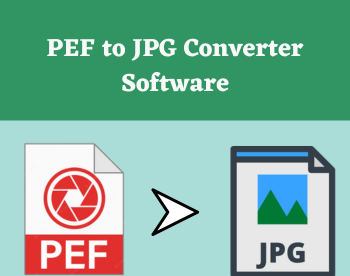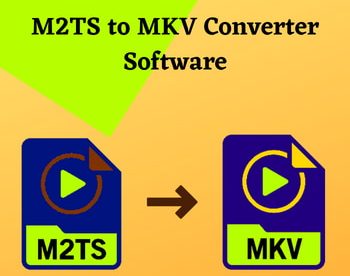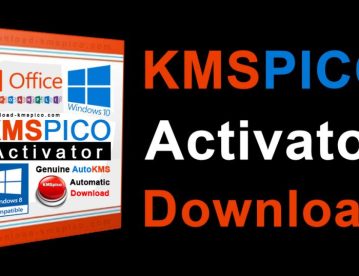6 Best Free Lighting Simulation Software for Windows
Here is a list of best free lighting simulation software for Windows. These freeware are used in the simulation of light in various situations. You can build various indoor and exterior projects, setup lighting sources and related parameters, and perform lighting calculations.
Using these, you can simulate lighting for projects like streetlight, room, buildings, etc. In many of these software, you can import floor plans or models from STF, DWG, DXF, IES, LDT, etc. files. For lighting sources, you can select lamps, luminaires, sensors, etc., using the inbuilt catalogs of these software. With respect to specified parameters and created scenarios, you can calculate various lighting parameters and view rendered scene in 3D. Many of these freeware render the created scene with lighting simulation using ray tracing technique. You can view results summary, pseudo colors, tone mapping, etc., in the output. In one of these, you can even create an animation of lighting simulation of created scene.
My favorite Lighting Simulation Software for Windows:
Relux is my favorite lighting designing and simulation software. It is a featured software to create indoor and outdoor models and simulate artificial light and daylight. It provides an inbuilt catalog to choose lighting sources from, lets you view and save output report, and also lets you save an animation movie of lighting simulation. Litecalc is another featured lighting simulation software which provides basic as well as advanced tools for lighting designing and simulation.
You may also like some best free Ray Tracing Software, Energy Modeling Software, and Optics Simulation Software for Windows.
Relux
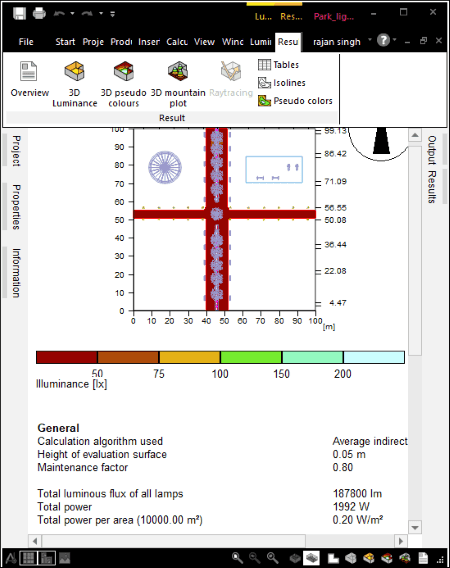
Relux is a featured software for the simulation of artificial light and daylight. It lets you plan and simulate lighting for interior as well as exterior projects. You can create various scenes including interior with CAD plan, exterior with CAD plan, road, tunnel, interior with background image, exterior with background image, etc. You can create a floor plan and insert room object, exterior objects, measuring objects, 3D objects, etc. For analysis of lighting, you can select a light product for Luminaire, Lamp, and Sensor. You can start with specifying design parameters based on indoor and outdoor project. The design factors include room type, dimensions, material, location, etc. Then, you can select and setup light sources and perform lighting calculations.
Features of Relux to look out for:
- It provides an inbuilt catalog to choose various objects to add to created floorplan or geometry.
- You can also select various real products for luminaire, lamp, and sensors from its inbuilt database, own search engine, online sources, local files, etc.
- It provides both 2D and 3D views of a created scene.
- It supports Dynamic Planning for lighting design and simulation.
- You can perform lighting calculation in artificial light, daylight, or day and artificial light mode.
- You get a Calculation Manager tool to configure calculation parameters and measuring areas for artificial light, daylight, sensors, ray tracing calculations, sensors, solar altitude graphs, etc.
- From its Results tab, you can view and analyze output results of lighting calculations. These include 3D luminance, 3D pseudo colors, 3D mountain plot, Raytracing, Tables, Isolines, and Pseudo colors.
- You can print the output reports in it.
- It lets you render and save animation movie (AVI) of lighting simulation.
This software contains a wide number of features with respect to lighting simulation. You can know more about its every feature in detail from this link.
Note: It requires you to register a free account on its official website. The registered account is used to log in and use this software.
Litecalc
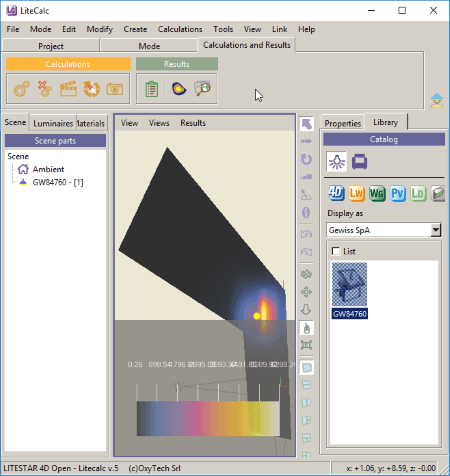
Litecalc is another featured lighting design and simulation software for Windows. It lets you create 2D and 3D interior and exterior design, setup lighting parameters, and perform calculations for various lighting parameters.
Let’s see what are the key features of this lighting simulation software:
- You can import 3DS, WaveFront Obj, and DXF files to start creating a model.
- It lets you create models for road, room, exterior, etc. for lighting simulation and calculation.
- You can also create extruded object, window, virtual plane, sensor, grid PoS, etc., in your project.
- It lets you add Luminaires from its inbuilt library and setup its distance, height, flux method, etc.
- You can select material for floor mat, ceiling mat, wall mat, etc., from its library.
- For performing lighting calculations, you can configure sunlight settings. You can also setup various other parameters for calculation including vertical illuminance, light pollution, Ecil cylindrical illuminance, etc.
- It lets you render the created scene with lighting simulation using ray tracing.
- You can view output as results summary, pseudo colors, or tone mapping.
- It provides some additional tools such as Measurement, Capture Image, Oxl Editor, Scripting, etc.
- You can export project as GFD file.
Note: You need to register on its website to download this software. The registration is free.
DIALux
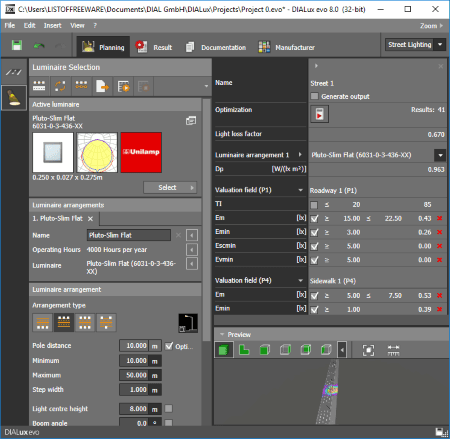
DIALux is a featured lighting design and simulation software for Windows. It is a professional lighting design software to model various scenes and simulate lighting. In it, you can simulate different lighting projects including outdoor and building, room, street lighting, and simple indoor. You can also import a plan or IFC file for the simulation of lighting. Other than that, it lets you import models in the formats of STF, DWG, DXF, IES, LDT, etc. It lets you select various light sources (Luminaire, Lamp, Daylighting System) from real manufacturers.
This software basically divides the lighting simulation into different tasks. First, you can construct a building, floor plan, road plan, etc., using the available modeling tools. It provides a 3D rendered view of the created plan. Next, you can specify and setup various lighting conditions. These include Luminaries, Lamps, Edit Joints, Filters, Light Scenes, Assessment Zones, Maintenance Factors, Energy Consumption, etc. It lets you import 3D luminaires models from the supported online service. Also, you can draw help lines and labels, check the project overview, etc. You can also draw and setup calculation objects, working planes, work areas, areas of activity, room main surfaces, etc. It lets you view the light simulation in real time. You can also view the calculations in the results such as fitting, distance, inclination, light overhang, luminous intensity class, glare index class, etc.
You can export views, ray traced images, and plans as JPEG, BMP, and PNG images. It lets you view a proper documentation of output and print it too.
LuxRender
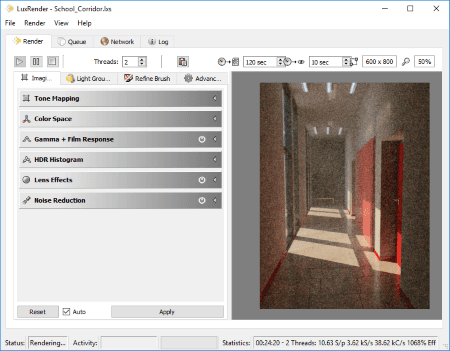
LuxRender is one more free lighting simulation software for Windows. It doesn’t provide any modeling tool, so you need to use a few sample scenes provided in it for lighting simulation. It lets you load scenes from FLM files too. You can change various parameters and simulate the scenes in various lighting conditions. Here are the parameters to vary for lighting simulation:
- Imaging: From here, you can adjust Tone Mapping (kernel, prescale, postscale, burn, clamp method), Color Space (whitepoint, RGB, temperature), Gamma and Film Response, Lens Effects (Bloom, Vignetting, C. Aberration, Glare), and Noise Reduction. You can also view HDR histogram here.
- Light Groups: You can adjust parameters for light sources like main lamp, backlight, etc.
- Refine Brush: You can use a pen to define areas of the image which should be focussed. For this, you can set pen type, size, strength, and overlay opacity.
After configuring above render setting, you can render the scene and view its progress from the Queue tab. You can export various rendered images to PNG, JPEG, BMP, and TIFF files, such as Tonemapped Image, High Dynamic Range Image, etc. It also provides Batch process FLM files feature.
Light Demo

Light Demo is a basic lighting simulation software in this list. It lets you simulate lighting impact on several 3D objects such as shapes, women, dwarf, streetlight, chair, soccerball, book, etc. You can also change material of an object to brass, bronze, chrome, copper, polished copper, silver, pearl, etc. It lets you select light source as directional, spot, or point light. You can even turn on/off ambient light, turn on/off point light, turn on/off directional light, turn on/off spotlight, and turn on/off all light. You can setup all these parameters and view lighting simulation in real time. It doesn’t let you save the image or any results.
You can setup various input parameters by right clicking on its interface.
Beamwright
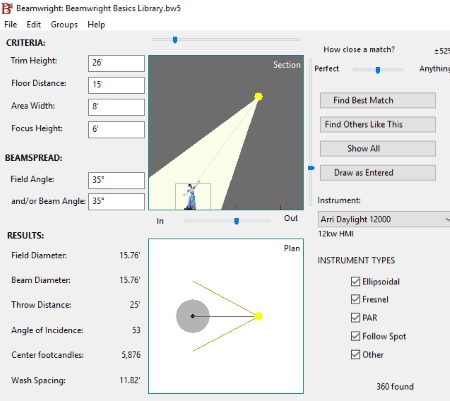
Beamwright is a free lighting simulation software which basically estimates how light behaves over distances. For this, you can set up a spot with light hanging at trim above floor at some distance away from a person you want to light. It lets you specify trim height, floor distance, area width, focus height, field angle, and beam angle. You can also select a light instrument of types, such as ellipsoidal, fresnel, PAR, follow spot, etc. You can use Find Best Match option to choose a suitable light for your scenario. In the results, it calculates and shows field diameter, beam diameter, throw distance, angle of incidence, center footcandles, and wash spacing. It also displays section and plan views.
About Us
We are the team behind some of the most popular tech blogs, like: I LoveFree Software and Windows 8 Freeware.
More About UsArchives
- May 2024
- April 2024
- March 2024
- February 2024
- January 2024
- December 2023
- November 2023
- October 2023
- September 2023
- August 2023
- July 2023
- June 2023
- May 2023
- April 2023
- March 2023
- February 2023
- January 2023
- December 2022
- November 2022
- October 2022
- September 2022
- August 2022
- July 2022
- June 2022
- May 2022
- April 2022
- March 2022
- February 2022
- January 2022
- December 2021
- November 2021
- October 2021
- September 2021
- August 2021
- July 2021
- June 2021
- May 2021
- April 2021
- March 2021
- February 2021
- January 2021
- December 2020
- November 2020
- October 2020
- September 2020
- August 2020
- July 2020
- June 2020
- May 2020
- April 2020
- March 2020
- February 2020
- January 2020
- December 2019
- November 2019
- October 2019
- September 2019
- August 2019
- July 2019
- June 2019
- May 2019
- April 2019
- March 2019
- February 2019
- January 2019
- December 2018
- November 2018
- October 2018
- September 2018
- August 2018
- July 2018
- June 2018
- May 2018
- April 2018
- March 2018
- February 2018
- January 2018
- December 2017
- November 2017
- October 2017
- September 2017
- August 2017
- July 2017
- June 2017
- May 2017
- April 2017
- March 2017
- February 2017
- January 2017
- December 2016
- November 2016
- October 2016
- September 2016
- August 2016
- July 2016
- June 2016
- May 2016
- April 2016
- March 2016
- February 2016
- January 2016
- December 2015
- November 2015
- October 2015
- September 2015
- August 2015
- July 2015
- June 2015
- May 2015
- April 2015
- March 2015
- February 2015
- January 2015
- December 2014
- November 2014
- October 2014
- September 2014
- August 2014
- July 2014
- June 2014
- May 2014
- April 2014
- March 2014
